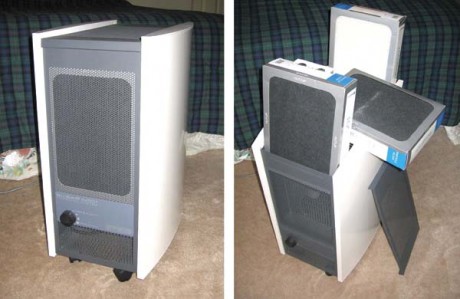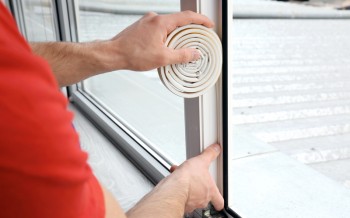Cleaning the Air: Part I
By Hannah McKenzie
Q: Would installing an air cleaner be beneficial for my health or my home's cleanliness? What are the options?
A: Unfortunately, air cleaners cannot replace routine house cleaning or Fido's bath, but they can improve indoor air quality. Using air cleaners has not been proven to reduce the symptoms of chronic respiratory illnesses such as asthma; however, many people, including my husband, claim relief from indoor air allergies.
You should take three steps before considering an air cleaner.
- Eliminate the sources of air contaminants.
- Introduce ventilation to remove contaminants.
- Clean.
Duct sealing may eliminate a source of dust, and installing bathroom exhaust fans is an example of ventilation. Cleaning can be improved by investing in a HEPA vacuum cleaner.
There are four basic air cleaning technologies. Mechanical air filters such as HEPA filters capture particles like dust, pet dander and pollen. Electronic air cleaners such as electrostatic precipitators give particulates an electric charge that causes the dust to cling to a surface inside the air cleaner. This is the same concept as your hair clinging to a balloon.
Some electronic air cleaners exhaust the charged particles, which end up clinging and staining nearby walls and furniture. Obviously not a terrific option. There is also ultraviolet germicidal irradiation (UVGI) and photocatalytic oxidation (PCO). UVGI is intended to kill most mold spores and bacteria. PCO air cleaners tout the ability to kill gaseous pollutants. UVGI and PCO are often marginally effective in household air cleaners.
It is extremely important to avoid ozone generators that are sold as air cleaners. Ozone gas is a lung irritant that is known to cause adverse health effects. For more information visit: epa.gov/iaq/pubs/ozonegen.html.
Portable Room Air Cleaners
Most people are familiar with portable room air cleaners found in stores like Walmart or Target. They are also found online ranging in price from $50 to $300.
Standing in the store aisle, your brain may turn to putty as you try to decipher the fantastic claims and space-age technology. Focus on the goal: you want the most effective portable room air cleaner for a home environment. The winner is a mechanical air filter.
Your budget will dictate whether you get a HEPA-type filter or a true HEPA filter. True HEPA filters are preferable because they capture 99.97 percent of particles that have a size of 0.3 microns or larger. To understand this scale, dust mites are about 250 microns while the allergens they produce can be as small as 20 microns. One type of cat allergen ranges in size from two to 10 microns.
As you can imagine, larger particles like pollen, fur or dust mites are heavier and may not be airborne long enough to reach the air cleaner. This is why washing your bed sheets is more effective than using an air cleaner for these particles.
Evaluate the cost and ease of maintenance before making a final decision. If the unit requires replacement filters every six months, make sure new filters can be found and the cost fits your budget. Also, consider the cost of electricity. If you run a 100-watt air cleaner in your bedroom each night for eight hours, you will spend around $40 per year.
There is also the option of whole house air cleaners. We will chat about those options next month.
For more information visit: epa.gov/iaq/pubs/airclean.html
-
Share this story:




